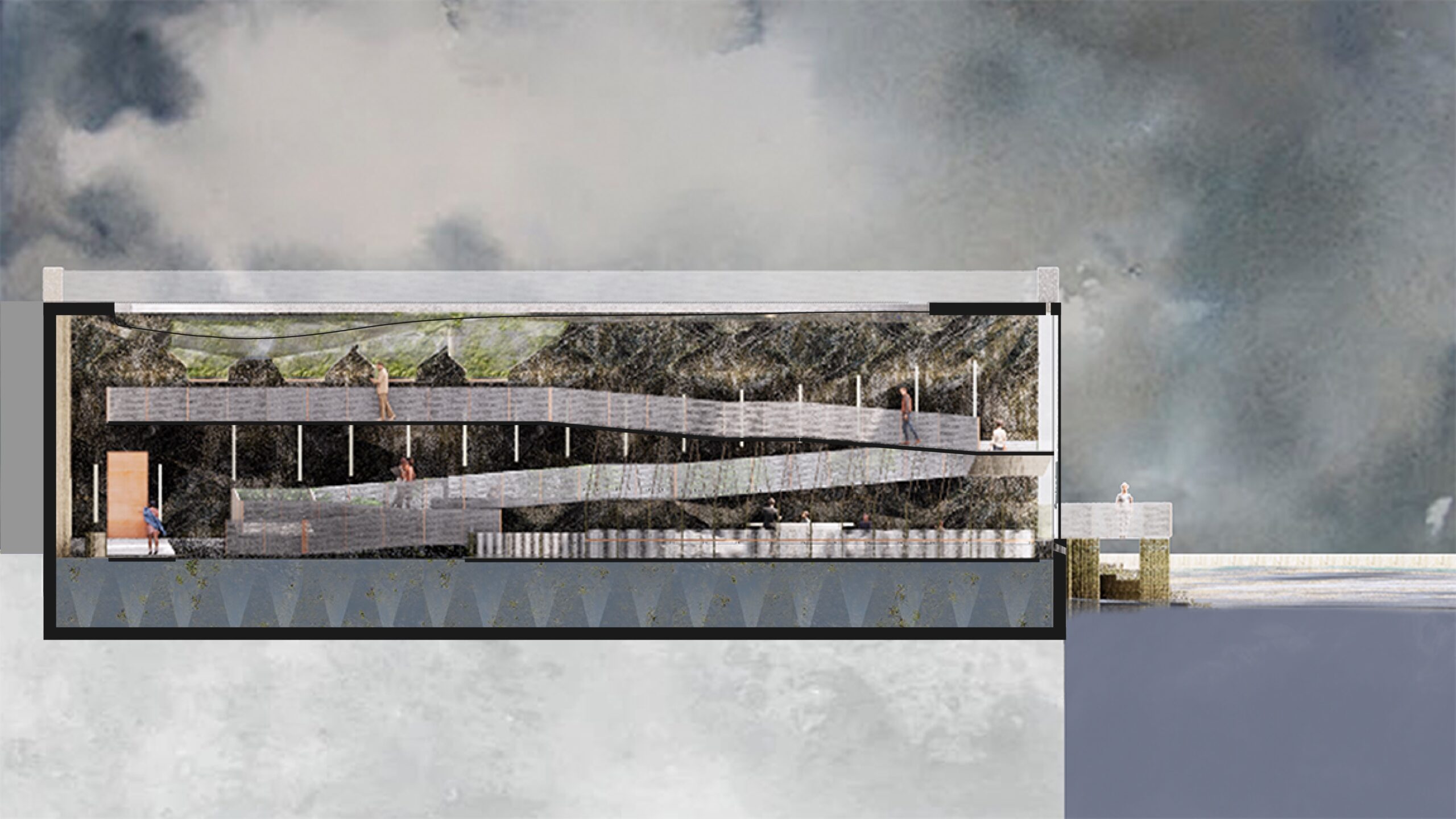Harvesting Water

Reimagining Environmental Waters as Constructive Materials in Resilient Coastal Interior
Synopsis:
This thesis proposes a reimagination of water from a destructive environmental condition into a generative, interior catalyst. Embracing the future of permanent tidal flooding, the building passively phytoremediates toxic water while creating an adaptive new form of interior, exploring possibilities of tidal, flood, and stormwater as tools for long-term, in-place resiliency in coastal communities facing an increasing risk of flooding.
Detailed Description:
A 2020 study found that 14% of New York City properties are currently at risk of flooding, accounting for over 120,000 buildings. By 2060, an estimated 13 million Americans will be displaced due to sea level rise and coastal flooding. This thesis explores the possibilities of tidal, flood, and stormwater as materials in our built environment, shifting their potential from destruction to resiliency.
Water within the built environment is hidden; hyper-controlled through intricate plumbing systems and filtered for use. Water within the exterior is uncontrolled and often feared. Floodwater is contaminated, picking up traces of where it has been and what it has touched. As sea levels rise, areas formerly at risk for 100-year floods will soon be submerged at high tide. How can the interior adapt to embrace the new reality of water, rather than avoid it?
This thesis tests how floodwater can become both a catalyst and context for design, reimagining normative spatial conditions as a living symbiotic relationship between inhabitant and enclosure. The presence of shifting environmental water will embed time into site, etching destruction and regrowth in materiality.
To do so, this thesis proposes an agricultural program using rain, storm, and brackish creek water to cultivate phytoremediative algae. The warehouse sits just a few feet above Coney Island Creek, which is severely contaminated by combined sewage overflow and long-term illegal dumping. By the end of the next decade, daily high tide will spill over the edge of the sidewalk and flood the ground floor of the building with semi-toxic creek water. Embracing flood and rain as baseline interior conditions allowed the design to reframe environmental waters as symbiotic materials. Adaptive elements like a network of floating docks and a ceiling that harvests stormwater work together to sequester carbon dioxide, divert hundreds of thousands of gallons of stormwater from the city’s combined sewer system, and phytoremediate millions of gallons of toxic creek water. Cultivated algae are then manufactured into sustainable, prototypical products developed by local small business startups.
The combined industrial algae farm and small business incubator integrates economic, social, and climate resiliency in the disinvested site of Coney Island, catalyzing local economic growth while detoxifying waters. The aim of this project was to design a prototypical green infrastructure intervention in which tidal, flood, and stormwater become a revitalizing new form of adaptive interior.